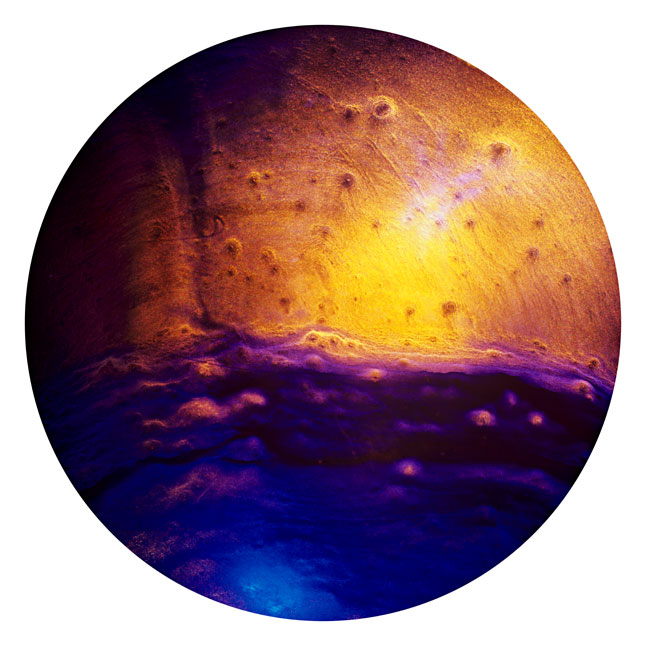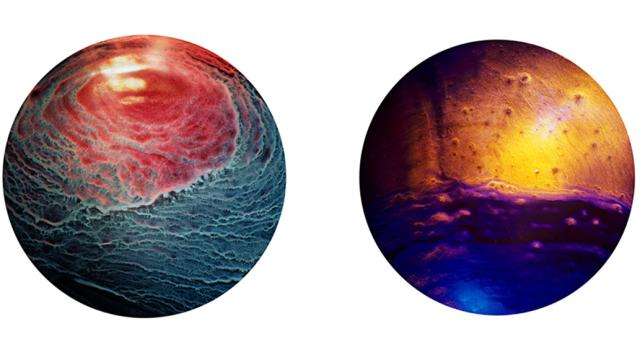The bottom of a whisky glass turns out to be far more complex, beautiful, and scientifically fascinating than you might expect. These photographs of dried whisky rings taken by Phoenix-based photographer Ernie Button now inspiring physicists who study complex fluids.
Whisky is, after all, a complex fluid of alcohol and water. Unlike rings from coffee, which are simply darker at the edges than in the middle, whisky dries into complex ridge pattern at the bottom of a glass. Button first noticed it eight years ago after a glass of Scotch. He’s been photographing them under coloured lights ever since, capturing their surreal beauty.
Somewhere along the way, he got interested in the science responsible for his photographs. Button eventually got in touch with Professor Howard Stone of Princeton’s Department of Mechanical and Aerospace Engineering. This week, members of Stone’s lab are presenting their results at the American Physical Society’s meeting on fluid dynamics. The whisky pattern is largely driven by the interplay of water and alcohol:
Initially, the droplet of alcohol-water solution creates a complex mixing flow. Ethanol evaporates first, due to the lower vapour pressure compared to water and, once the ethanol vanishes, a radial pattern can be observed. Further, as the initial ethanol concentration increases, the mobility of the receding contact line is increased as well. And, at high ethanol concentrations, the contact line recedes and draws groups of particles along with it that are then deposited in a ring-shaped pattern.
“The alcohol-water solution shows circulation flow patterns (triggered by the Marangoni Effect), which occur during drying and influences patterns formed in evaporating whisky solutions,” [Hyoungsoo Kim, a postdoctoral researcher within Stone’s group] noted. “Deposits in the actual whisky come from a small amount of inherent raw materials present from the preparation process.”
The particles that make up the patterned residue are the likely same ones that give each whisky its unique flavour, the stuff that is absorbed after years of ageing in wood casks. Button has noticed that whiskies aged for only a short amount of time don’t form those same rings. This might be what pure whisky flavour looks like.
Here is a selection from Button’s series Vanishing Spirits: The Dried Remains of Single Malt Scotch, which you can enjoy in full on his site. [American Physical Society]
Glengoyne 134
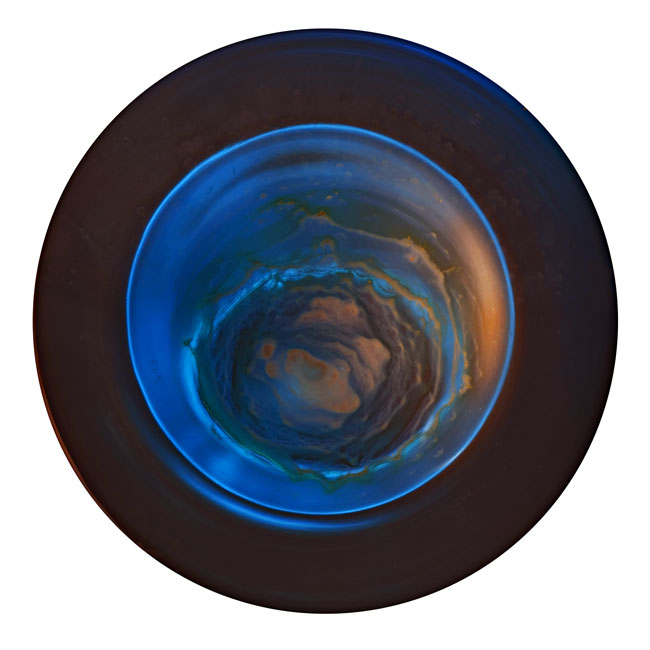
Laphroaig 122
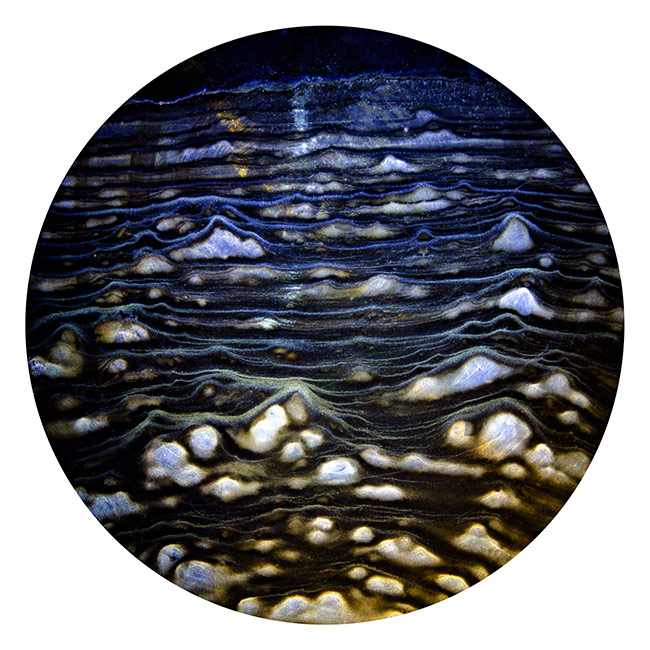
The Macallan 103
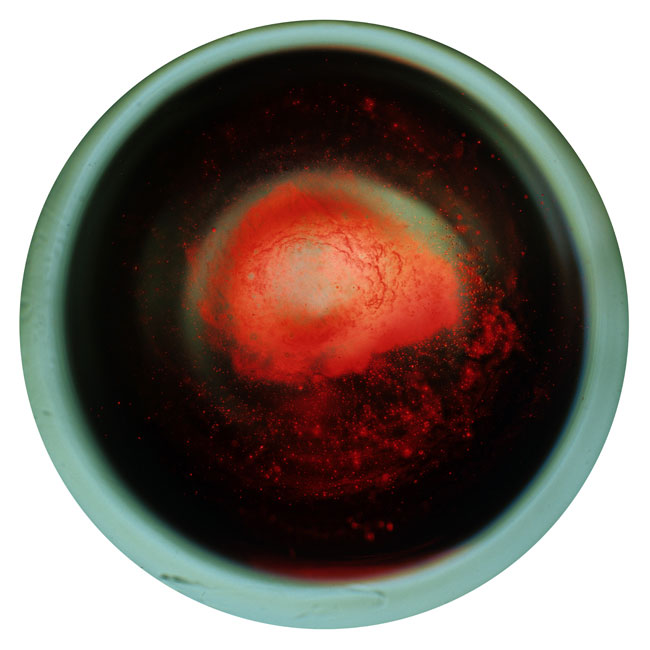
Clynelish 118
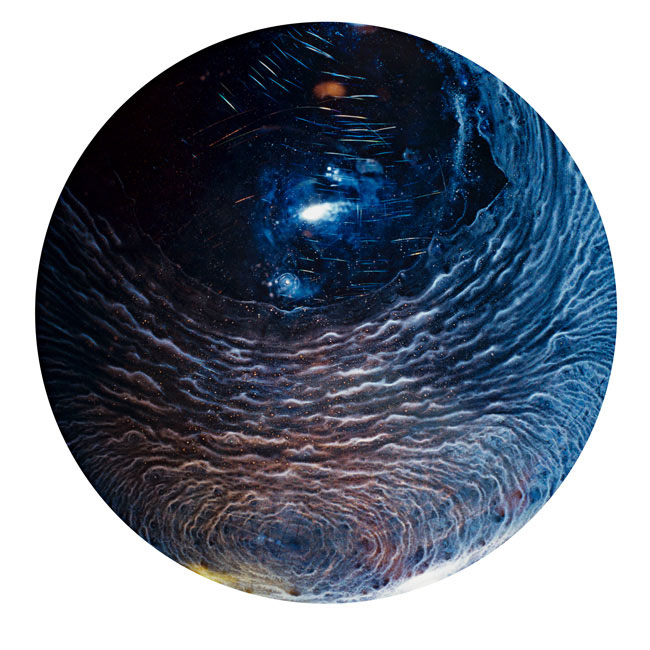
Aberlour 103
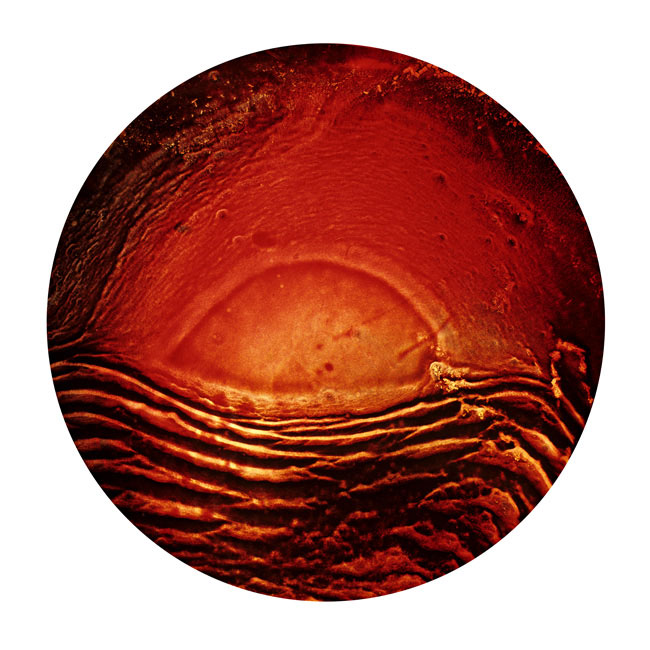
The Macallan 101
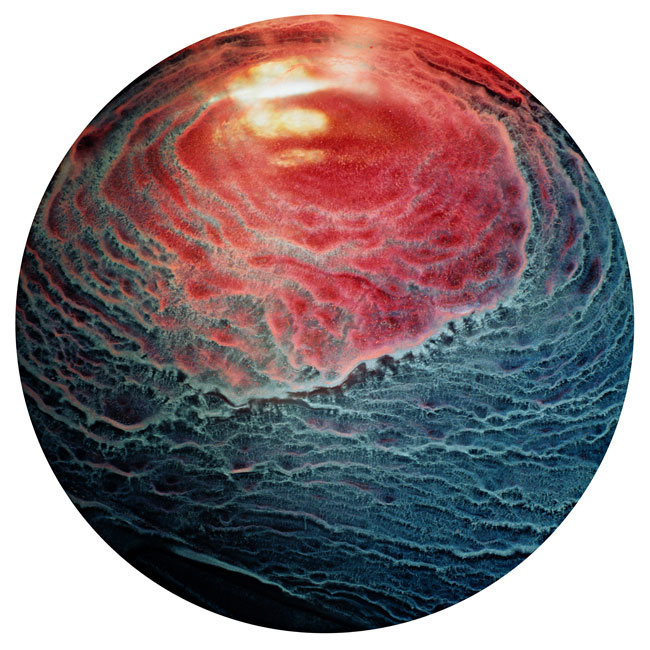
Glenlivet 137
